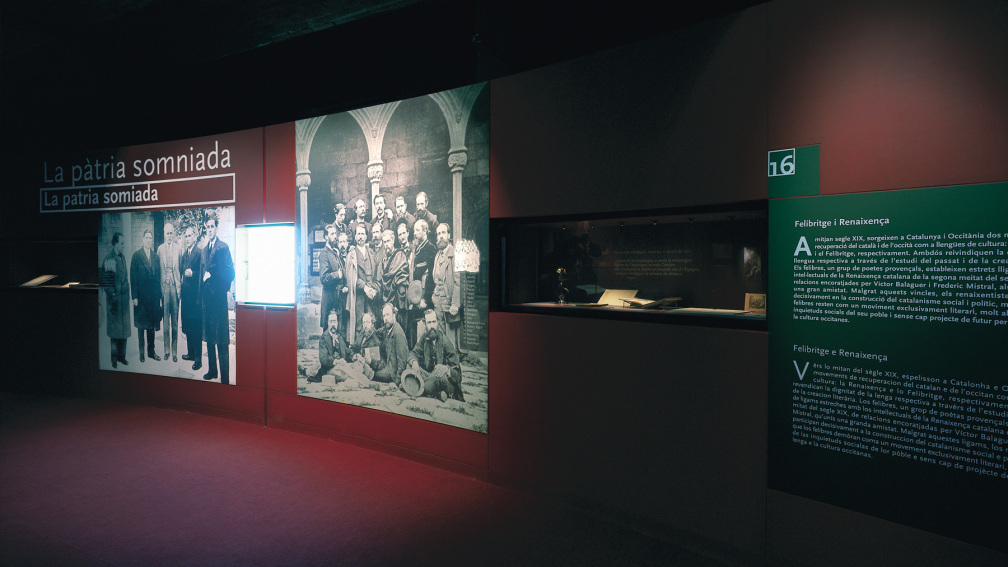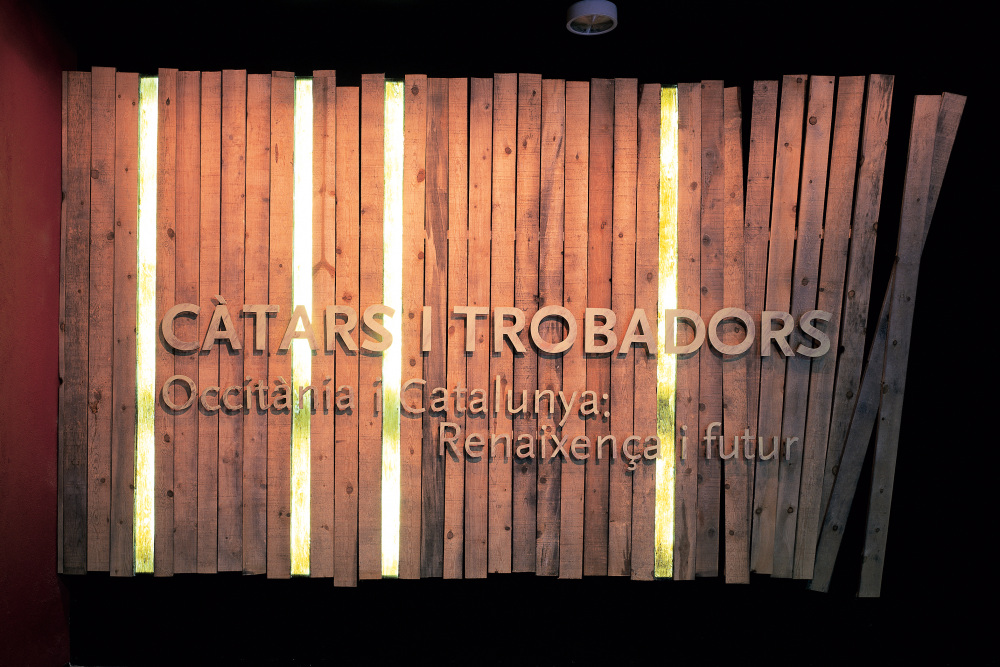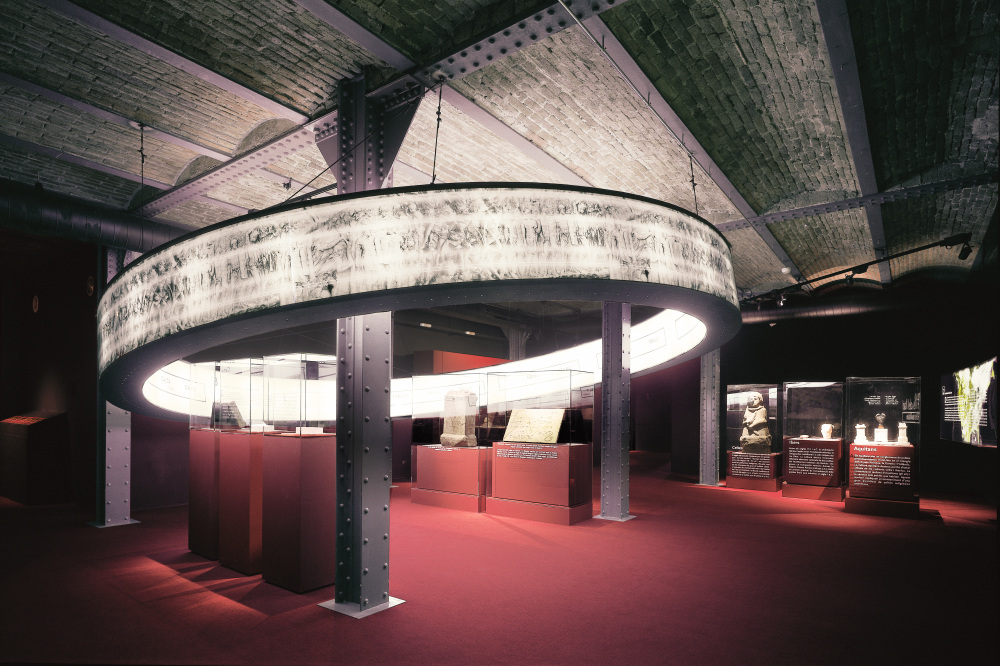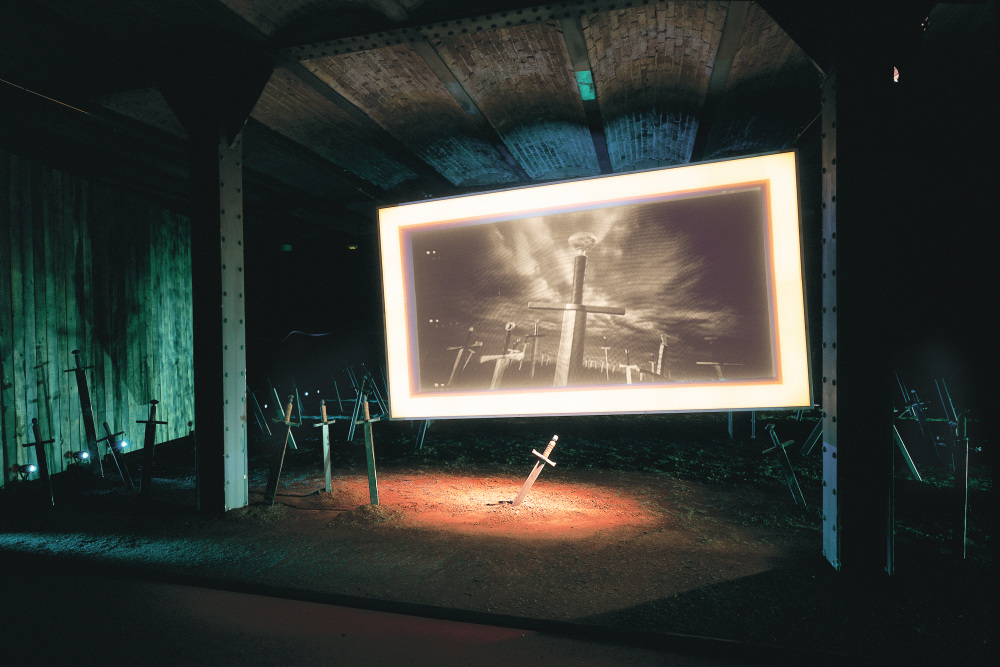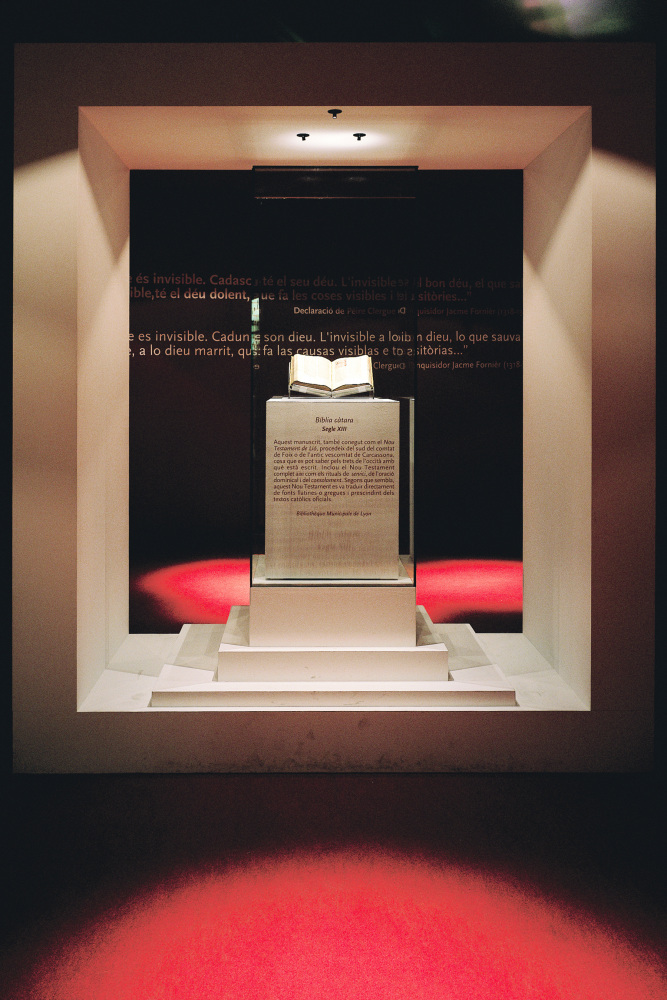Cathars and troubadours is a journey through the history of a country that has disappeared, Occitania, overcome by the force of Pope Innocent III against what he considered a heretical perversion of the Christian religion. The exhibition centres on three box-shaped rooms that form an interior-exterior relationship along the route, providing a rhythm to the exhibition discourse.
The first part is dedicated to the origins of Occitan culture and tradition, from the period predating Roman civilization. To symbolize the clash of cultures that took place in this region, a large lit ring was built that runs all around the space of the room. On the outside there are representations of reliefs depicting the Roman conquests; on the inside there are words in Latin, Occitan and Catalan. Next, there is an explanation of the formation of the medieval kingdoms and counties and the birth of troubadour tradition, through booths where visitors can listen to audio fragments.
The second zone explained what it meant to be a Cathar, the daily life and religious rites, through unique elements such as a unicum, an object of great historical value, the last existing Cathar bible in the world. How the people who professed this faith were hunted and subjected to harassment is also explained here, immersing the visitor in the scene of the conflict – a deserted battlefield where swords stuck into the ground, revealing just the cross-shaped hilts, recall a cemetery. At the end of this disconcerting landscape, there was a projection that brought the events to life through the memories of a Cathar. To this effect, we produced an audio-visual display with a dream-like effect, achieved using a light frame and two projections: one from in front onto tulle and one from behind onto the background, so that the two images merged together into an ominous haze of memory.
Following this tragic moment, the last area is dedicated to the process of recovering the memory of the Occitan language and the history of the Cathars through the figure of Frederic Mistral and the félibrige. An installation that presents a child recovering the language, writing a word in Occitan, provides the finishing touches to the exhibition, as a nod to the future of the language.
Institutional sponsor: Museu d’Història de Catalunya
Location: Barcelona, Catalonia
© Photography: Eloi Bonjoch

